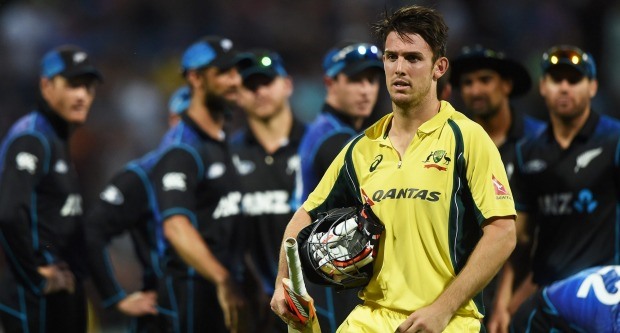Big Screen Review Protocols
0Below are the details of the ICC Big Screen Review Protocols which demonstrate neither the event managers or SKY TV breached policy when airing the replays leading to Marsh’s dismissal.
There are even TWO clauses under which it could be defended – the “bump-ball” process, and the “contentious incident” process. Note that, because the issue was a bump-ball, it was not a DRS matter as a such, but came under the category of “Umpire Review” – hence the issue of whether or not there was an appeal, and the 15-second window rule were not relevant to the case.
Underlining this, if technology had shown Marsh wasn’t out, New Zealand wouldn’t have lost their DRS privileges. The error was that the umpire did not refer the moment upstairs immediately and, because of that, was put in an uncomfortable position when the replay, inevitably and legitimately, was aired.
RULES APPLICABLE TO MATCHES IN WHICH THE DECISION REVIEW SYSTEM IS USED
- A holding graphic should be displayed at all times whilst play is in progress. The vision screen should be switched to the holding graphic from live vision or replays once the bowler has turned at the top of his run-up.
- The DRS includes circumstances where the on-field umpire initiates the referral of a decision to the 3rd umpire and/or a consultation with the 3rd umpire (an ‘Umpire Review’) and the process initiated by the players for the review of an on-field umpire’s decision (a ‘Player Review’).
3.1 Directions applicable in circumstances of an UMPIRE REVIEW
- The on-field umpire can refer run outs, stumpings, hit wicket and ‘bump ball’ caught decisions to the 3rd umpire who shall be responsible for making and conveying the final decision. In such a case, the directions as set out in 2.1 shall apply.
[2.1 Directions applicable in circumstances where an appeal is referred by the on-field umpire to the 3rd umpire for a decision – REFERRALS
- The on-field umpire can refer run outs, stumpings, hit wicket and ‘bump ball’ caught decisions to the 3rd umpire who shall be responsible for making and conveying the final decision.
- An on-field umpire wishing to refer one of these decisions to the third umpire shall signal to the 3rd umpire by making the shape of a TV screen with his hands.
- Once a decision is referred to the third umpire, the following graphic shall be put to screen: THIRD UMPIRE DECISION PENDING
- .This graphic should be held until the replays are cue’d and then fed to the big screen to replicate the TV viewer’s experience.
- The third umpire may watch a number of replays before making his decision. Once he is ready to make a decision he will inform the director of the TV broadcast (TV Director) whether his decision is ‘Out’ or ‘Not out’. The TV Director will then inform the Big Screen Director to switch from the broadcast feed to the 3rd umpire decision animation/slide. ‘OUT’ or ‘NOT OUT’.]
3.4 Directions applicable in the case of contentious incidents
- Contentious incidents may be regarded as any incident that may be considered likely to generate controversy or provoke unrest amongst the spectators. This would include debatable or incorrect umpiring decisions other than those that are the subject of a Player Review.
- The following rules should be followed in regard to the screening of such incidents on the Big Screen:
- These replays must be shown prior to the next delivery but should not be repeated thereafter.
- Only two replays of the incident may be shown, one at normal speed and one at slow motion.
- Ball tracking and hotspot visuals are not permitted for these replays.
- Replays of foot fault No Balls that have not been correctly called by the on-field umpire (unless the on-field umpire has initiated an Umpire Review or has requested the 3rd umpire to check the legality of the delivery, in which case the provisions of 3.1 and 3.3 above shall apply) shall not be shown on the Big Screen.
- Slow motion replays of bowling actions which may appear illegal may also not be shown.

